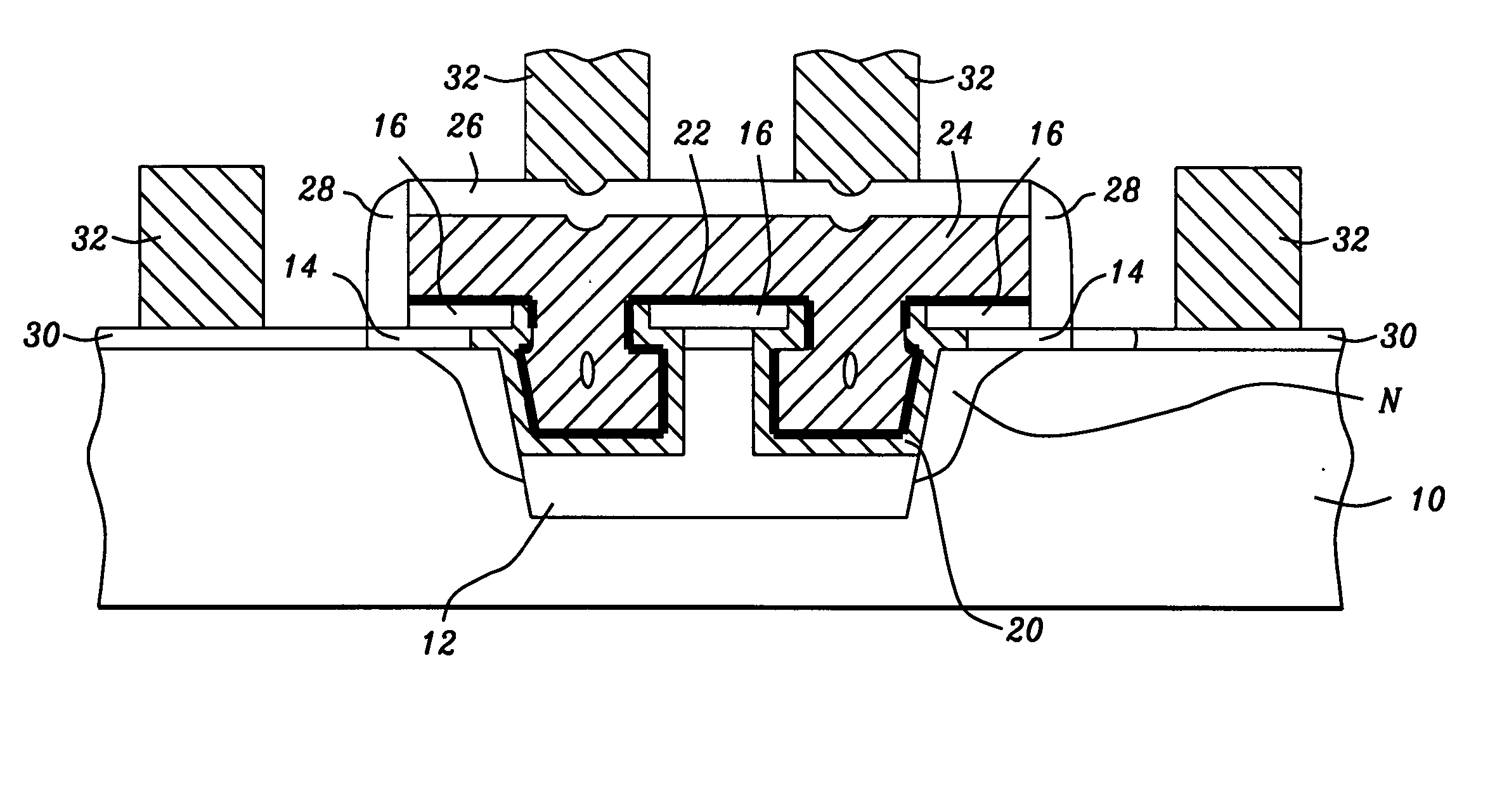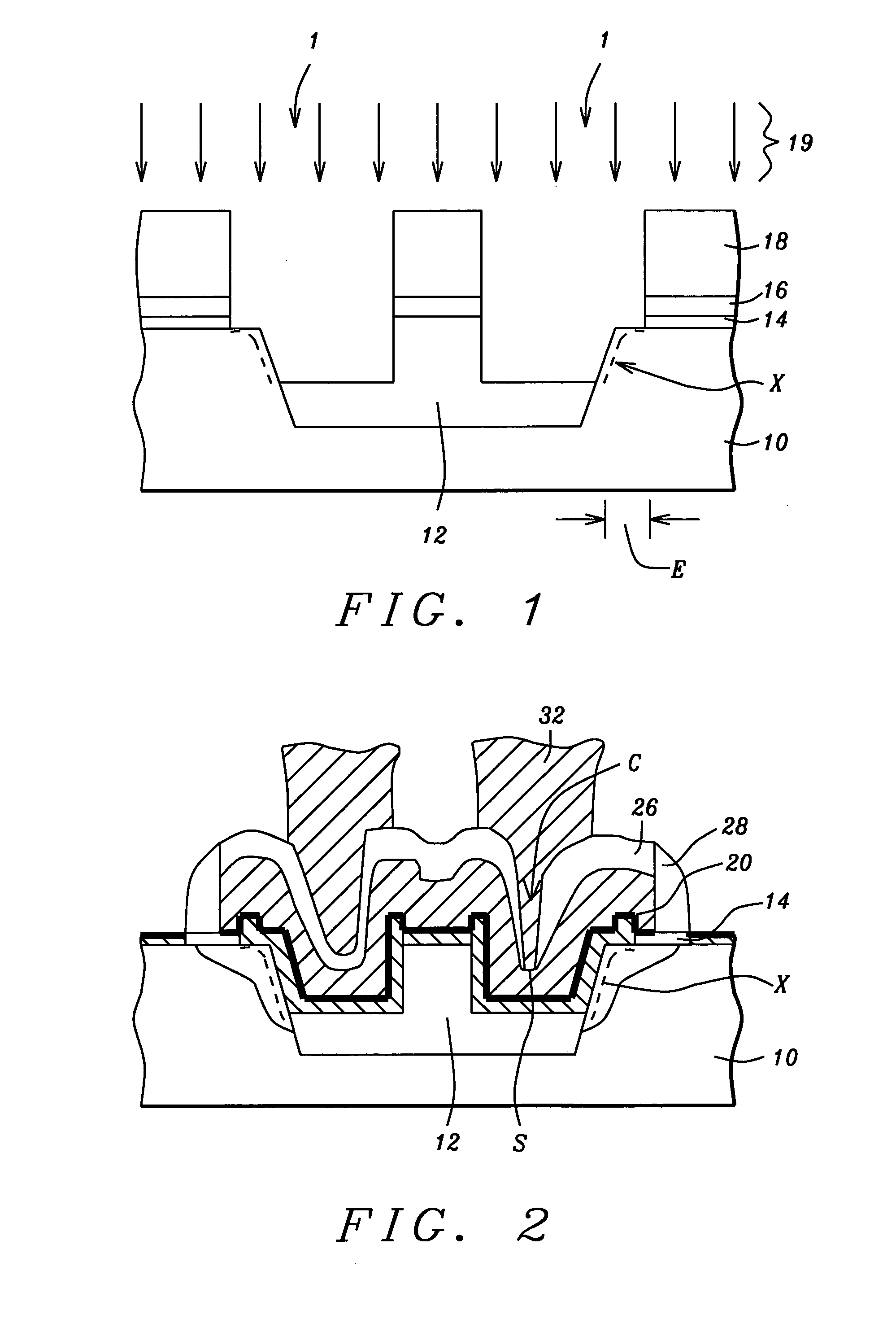Novel random access memory (RAM) capacitor in shallow trench isolation with improved electrical isolation to overlying gate electrodes
- Summary
- Abstract
- Description
- Claims
- Application Information
AI Technical Summary
Benefits of technology
Problems solved by technology
Method used
Image
Examples
Embodiment Construction
[0017] The method for making these RAM capacitors in a shallow trench isolation for 1-TSRAM applications is now described in detail. These capacitor structures are made with reduced plasma-etch damage to the substrate adjacent to the STI capacitor. Also, the capacitor is designed to have a bottle-shaped structure to maximize the capacitance while providing a top electrode that is essentially planar. The planar surfac allows the word lines (gate electrodes) to extend over th capacitor for increased density while minimizing electrical shorts between the word lines and the underlying capacitor top electrodes. Although the capacitor structure is made for 1-TSRAM devices, it should be understood that this novel structure is also applicable to RAM structures in general.
[0018] Referring first to FIG. 3, the method begins by providing a substrate 10, such as a P-doped single-crystal silicon. Shallow trenches are etched in the substrate 10 to a depth of between about 2500 and 5000 Angstroms...
PUM
 Login to View More
Login to View More Abstract
Description
Claims
Application Information
 Login to View More
Login to View More - R&D
- Intellectual Property
- Life Sciences
- Materials
- Tech Scout
- Unparalleled Data Quality
- Higher Quality Content
- 60% Fewer Hallucinations
Browse by: Latest US Patents, China's latest patents, Technical Efficacy Thesaurus, Application Domain, Technology Topic, Popular Technical Reports.
© 2025 PatSnap. All rights reserved.Legal|Privacy policy|Modern Slavery Act Transparency Statement|Sitemap|About US| Contact US: help@patsnap.com



